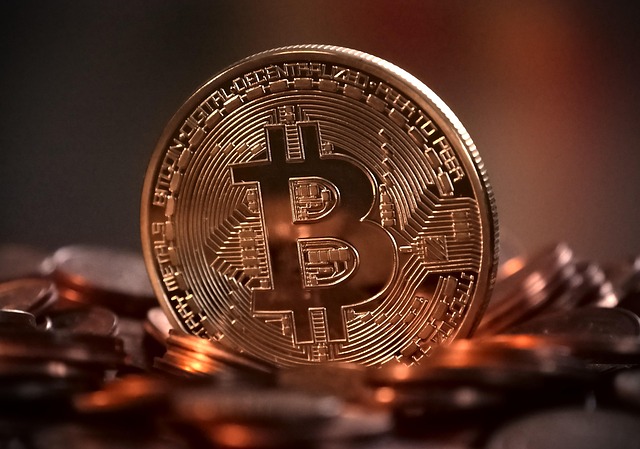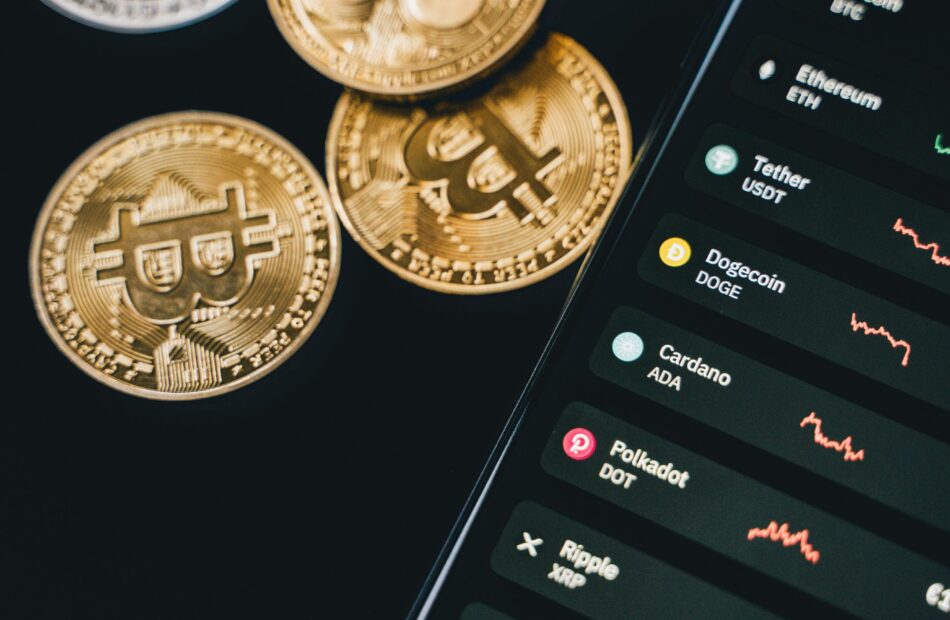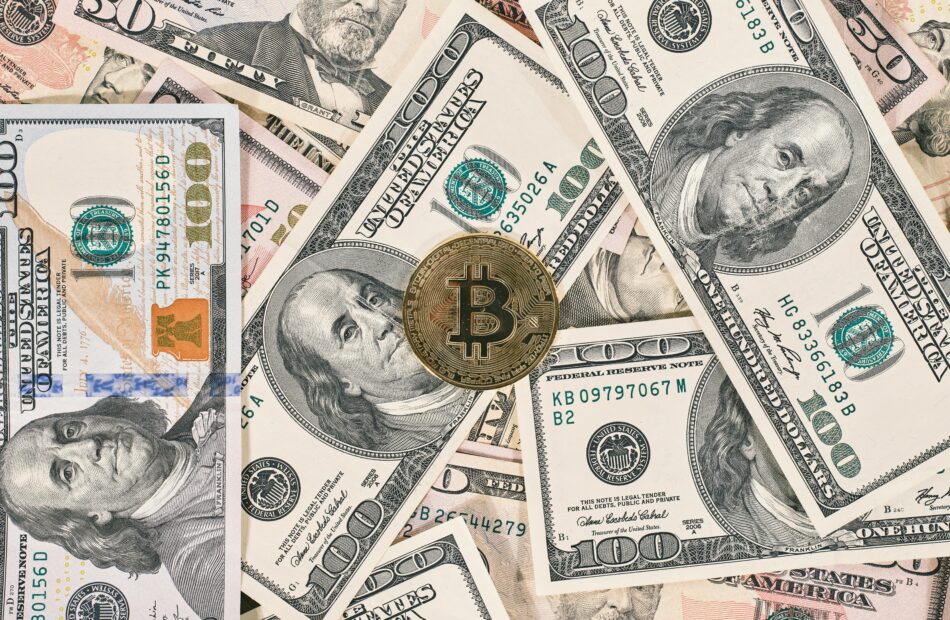HBAR Foundation joins OnlyFans founder startup to bid on TikTok
The popular video-sharing app TikTok has been making headlines recently as various companies and organizations have been vying to purchase it. The latest contenders in this race are the HBAR Foundation and Zoop, a social app created by OnlyFans founder Tim Stokely.
According to a recent report by Reuters, the HBAR Foundation and Zoop have submitted a bid to purchase TikTok in the United States. This bid comes after other major technology companies, such as Amazon, Oracle, Microsoft, and Rumble, have also expressed interest in acquiring the app.
The bid from the HBAR Foundation and Zoop is not just about changing ownership, but also about creating a new paradigm where both creators and their communities can directly benefit from the value they generate. This aligns with Zoop co-founder RJ Phillips’ statement that “Our bid for TikTok isn’t just about changing ownership, it’s about creating a new paradigm where both creators and their communities benefit directly from the value they generate.”
The potential sale of TikTok has been a hot topic since 2024 when the US Congress passed a bill that could potentially ban the app if it wasn’t separated from its Chinese parent company, ByteDance. The initial deadline for the sale was Jan. 19, but President Donald Trump signed a 75-day extension, pushing the potential sale until April 5.
The HBAR Foundation and Zoop’s bid is a late-stage one, and it remains to be seen if it will be successful. Cointelegraph reached out to both parties for comment but did not receive a response at the time of publication.
This is a developing story, and more information will be added as it becomes available. Stay tuned for updates on the potential sale of TikTok and its impact on the social media landscape.
FDUSD stablecoin depegs following insolvency claims by Justin Sun
The First Digital US dollar-pegged stablecoin (FDUSD) depegged on April 2 following claims of insolvency from Tron network founder Justin Sun, who said that the issuer of the tokenized fiat equivalent, First Digital, is insolvent.First Digital responded to the claims by assuring users they are completely solvent and said that FDUSD is still fully backed and redeemable with the US dollar on a 1:1 basis.The firm also said that the ongoing dispute is with TrueUSD (TUSD), another stablecoin. The firm wrote in an April 2 X post:”Every dollar backing FDUSD is completely secure, safe, and accounted for with US-backed Treasury Bills. The exact ISIN numbers of all of the reserves of FDUSD are set out in our attestation report and clearly accounted for.”First Digital also indicated they would be taking legal action against Sun for making the claims on social media. “This is a typical Justin Sun smear campaign to try to attack a competitor to his business,” spokespeople for First Digital wrote.FDUSD loses dollar peg: Source: CoinMarketCapRelated: SMBC, Ava Labs, Fireblocks sign MoU for stablecoin framework in JapanProof of reserves: the answer to FUD, runs on the bank, and depegging?Proof-of-reserve audits are onchain cryptographic verifications that a custodian, crypto firm, or stablecoin issuer has the digital assets it claims to hold.These proof-of-reserve audits use zero-knowledge tech and Merkle Trees — a data structure used to verify onchain information — as an alternative to audit reports or attestations widely used in the crypto industry.Despite proof-of-reserve technology not yet tracking liabilities against reserves, the system promises to be better than the current system of audits that do not use real-time, onchain data.First Digital’s audit report of reserves as of Feb. 28, 2025. Source: First DigitalTal Zackon, founder of the Tres Finance auditing and reporting platform, previously told Cointelegraph that current attestations and third-party audit reports only represent “snapshots” of reserves that can be manipulated, exploited, or misconstrued.Stablecoin issuers will likely need to adopt proof-of-reserve tools as the tokenized fiat equivalents become more integrated into global capital markets and critical financial infrastructure such as stock exchanges, escrow services, and clearinghouses.This integration will require stablecoin issuers to provide up-to-date, real-time data, which may need to be updated several times per minute as opposed to the monthly audit reports that are typically released by firms to attest to asset reserves.Magazine: Justin Sun reignites HTX feud, India reconsiders crypto hate: Asia Express
Lawmaker alleges Trump wants to replace US dollar with his stablecoin
California Representative Maxine Waters, ranking member of the US House Financial Services Committee, used her opening statement at a markup hearing to criticize President Donald Trump’s business and ethical entanglements with the crypto industry, including the launch of a stablecoin by a family-backed company.Addressing lawmakers at an April 2 hearing, Waters said Trump had used his position as president to leverage “multiple crypto schemes” for profit, including a US dollar-pegged stablecoin launched by World Liberty Financial (WLFI) — the firm backed by his family. The California lawmaker pointed to Trump’s memecoin launched in January, his plans to establish a national cryptocurrency stockpile, and “his own stablecoin,” referring to WLFI’s USD1 token launched in March.Rep. Maxine Waters addressing the House Financial Services Committee on April 2. Source: GOP Financial Services“With this stablecoin bill, this committee is setting an unacceptable and dangerous precedent, validating the president and his insiders’ efforts to write rules of the road that will enrich themselves at the expense of everyone else,” said Waters, adding:“Trump likely wants the entire government to use stablecoins from payments made by the Department of Housing and Urban Development, to Social Security payments, to paying taxes. And which coin do you think Trump would replace the dollar with? His own, of course.”Waters does not stand alone in her criticism of Trump’s crypto ventures, with many lawmakers and experts across the political spectrum suggesting potential conflicts of interest. Committee Chair French Hill, who spoke on stablecoins before Waters, also reportedly said that the Trump family’s involvement in the industry makes legislation “more complicated.”“If there is no effort to block the President of the United States of America from owning his stablecoin business […] I will never be able to agree on supporting this bill, and I would ask other members not to be enablers,” said Waters. Related: Crypto has a regulatory capture problem in Washington — Or does it?Representative Bryan Steil, who introduced the Stablecoin Transparency and Accountability for a Better Ledger Economy, or STABLE Act, did not immediately address Waters’ concerns about Trump’s stablecoin but referred to establishing safeguards for consumers. Hill did not mention Trump in his opening statement but said there needed to be a “clear federal framework” for payment stablecoins.Crypto legislation moving through CongressThe committee will consider amendments to the STABLE Act, as well as bills to combat illicit finance using emerging financial technologies and blocking the US government from issuing a central bank digital currency, or CBDC. The markup hearing was a necessary step before the committee could vote on whether to advance the bills to the House of Representatives. Magazine: Trump’s crypto ventures raise conflict of interest, insider trading questions
Bitcoin miner Bitfarms secures up to $300M loan from Macquarie
Bitfarms, a global computer infrastructure company known for its Bitcoin mining operations, has entered into a $300 million loan agreement with Macquarie Group to finance the development of its high-performance computing (HPC) data centers.According to an April 2 announcement, Macquarie’s private debt facility will provide $50 million in initial funding for Bitfarms’ Panther Creek data center project in Pennsylvania. The remaining $250 million will be released once Bitfarms achieves “specific development milestones at its Panther Creek location,” the announcement said.Once developed, Panther Creek will have a nearly 500-megawatt capacity fueled by several power sources. Panther Creek “will be sought after by HPC tenants once construction of the project is underway,” said Joshua Stevens, an associate director at Macquarie Group. Source: BitfarmsThe project is being delivered at a time when AI applications are fueling growing demand for new sources of computational power and data storage capacity. Bitcoin miners are rushing to fill the void — and to secure reliable revenue streams for themselves in a post-halving environment. However, Bitfarms disclosed in its recent quarterly report that it continues to face “regulatory challenges in expanding its energy capacity,” with the approval timeline ranging from 12 to 36 months. In the meantime, Bitfarms expects its $125 million acquisition of Stronghold Digital Mining to do much of the heavy lifting in providing additional capacity, CEO Ben Gagnon told investors.Related: Bitfarms sells Paraguay site to Hive for $85M, refocuses on USAmid industry pressure, miners are HODLing Bitfarms mined 654 Bitcoin (BTC) in the final quarter of 2024 at an average all-in cash cost of $60,800. Like other miners, Bitfarms has elected to retain a significant portion of its mined Bitcoin. Industry data shows it currently holds 1,152 BTC on its books, placing it among the top 25 publicly traded Bitcoin investors.Miners like Hive Digital have doubled down on their long-term Bitcoin “hodl” strategy as a way to bolster their balance sheet. The company’s Bitcoin holdings have swelled to 2,620 BTC. Meanwhile, MARA Holdings has accumulated 46,374 BTC and has announced plans for a $2 billion stock offering to acquire more Bitcoin. Source: Frank HolmesLike Bitfarms, Hive Digital, Core Scientific, Hut8 and Bit Digital have also made a strategic pivot toward AI and HPC.Hive executives told Cointelegraph that the company has repurposed a portion of its Nvidia GPUs for such tasks. They said AI applications can generate more than $2.00 per hour in revenue, compared to just $0.12 per hour for crypto mining activities. Related: BTC miners adopted ‘treasury strategy,’ diversified business in 2024: Report
Most opportune time to buy Bitcoin? Now — Bitwise CIO Matt Hougan explains why
Are you considering investing in Bitcoin (BTC) but unsure of the right time to do so? Look no further than our latest interview with Bitwise’s chief investment officer, Matt Hougan. In this in-depth analysis, Hougan explains why now is the most opportune time to buy Bitcoin from a risk-adjusted perspective.
Hougan starts by acknowledging the uncertainties surrounding Bitcoin in its early days, such as technology risks, regulatory threats, trading inefficiencies, and reputational concerns. However, he argues that these risks have significantly diminished over time. With the launch of Bitcoin ETFs, adoption by major institutional investors, and even the US government’s strategic Bitcoin reserve, Bitcoin has solidified its place in the global financial ecosystem.
According to Hougan, Bitcoin’s current market cap is only 10% of gold’s, and to match gold’s value, Bitcoin would have to increase tenfold. But that’s just the beginning. Hougan believes that Bitcoin has even more long-term potential, and institutional adoption is about to accelerate. He also points out that market fundamentals, such as limited new supply and increasing demand, could push Bitcoin to new heights.
Don’t just take our word for it, watch the full interview with Matt Hougan on our YouTube channel and subscribe for more insightful content. Hougan’s analysis is a must-watch for anyone considering investing in Bitcoin. With his expertise and knowledge, he provides a compelling argument for why now is the best time to buy Bitcoin.
So, what are you waiting for? Head over to our YouTube channel and watch the full interview now. And while you’re there, don’t forget to subscribe for more market insights and updates. With Bitcoin’s potential for growth and increasing institutional adoption, there’s no better time to invest in this digital asset. Don’t miss out on this opportunity to be a part of the future of finance.
Price analysis 4/2: BTC, ETH, XRP, BNB, SOL, DOGE, ADA, TON, LINK, LEO
Bitcoin (BTC) bulls have pushed the price above the $87,000 level even as US trade tariffs are slated to kick in on April 2. Bitcoin may remain volatile in the near term, but analysts remain bullish for the long term.According to Fidelity analyst Zack Wainwright, Bitcoin is currently in an acceleration phase, which “can conclude with a sharp, dramatic rally” if history repeats itself. If that happens, Wainwright expects $110,000 to be the starting base of the next leg of the upmove.Crypto market data daily view. Source: Coin360BitMEX co-founder and Maelstrom chief investment officer Arthur Hayes said in a post that if the Federal Reserve pivots to quantitative easing, then Bitcoin could rally to $250,000 by year-end.Could Bitcoin break above the $89,000 overhead resistance, starting a rally in select altcoins? Let’s analyze the charts of the top 10 cryptocurrencies to find out.Bitcoin price analysisBitcoin has risen close to the resistance line, where the sellers are expected to pose a solid challenge.BTC/USDT daily chart. Source: Cointelegraph/TradingViewThe flattening 20-day exponential moving average ($85,152) and the relative strength index (RSI) just above the midpoint signal the bears are losing their grip. That improves the prospects of a rally above the resistance line. If that happens, the BTC/USDT pair could climb to $95,000 and eventually to $100,000.Alternatively, if the price turns down sharply from the resistance line and breaks below $81,000, it will suggest that the bears are back in the driver’s seat. The pair may then tumble to $76,606.Ether price analysisEther (ETH) rebounded off the $1,754 support on March 31, signaling that the bulls are attempting to form a double-bottom pattern.ETH/USDT daily chart. Source: Cointelegraph/TradingViewThe bears will try to stall the relief rally at the 20-day EMA ($1,965). If the price turns down from the 20-day EMA, the possibility of a break below $1,574 increases. The ETH/USDT pair may then collapse to $1,550.Contrarily, a break and close above the 20-day EMA opens the doors for a rise to the breakdown level of $2,111. If buyers pierce this resistance, the pair will complete a double-bottom pattern, starting a rally to the target objective of $2,468.XRP price analysisXRP’s (XRP) weak bounce off the crucial $2 support suggests a lack of aggressive buying by the bulls at the current levels.XRP/USDT daily chart. Source: Cointelegraph/TradingViewThat heightens the risk of a break below $2. If that happens, the XRP/USDT pair will complete a bearish head-and-shoulders pattern. This negative setup could start a downward move to $1.27. There is support at $1.77, but it is likely to be broken.On the upside, a break and close above the 50-day SMA ($2.39) suggests solid buying at lower levels. The pair may then rally to the resistance line, where the bears are expected to mount a strong defense. A break and close above the resistance line signals a potential trend change.BNB price analysisBNB’s (BNB) recovery attempt stalled at the moving averages on April 1, indicating that the bears are selling on rallies.BNB/USDT daily chart. Source: Cointelegraph/TradingViewThe bears will try to strengthen their position by pulling the price below $587. If they can pull it off, the BNB/USDT pair could descend to the 50% Fibonacci retracement level of $575 and later to the 61.8% retracement of $559. The deeper the pullback, the greater the time needed for the pair to recover.A break above the moving averages is the first sign that the selling pressure has reduced. The pair may rally to $644 and then to $686, which is likely to attract sellers.Solana price analysisSolana (SOL) is getting squeezed between the 20-day EMA ($132) and the $120 support, signaling a possible range expansion in the short term.SOL/USDT daily chart. Source: Cointelegraph/TradingViewIf the price breaks and closes above the 20-day EMA, it suggests that the buyers have overpowered the sellers. The SOL/USDT pair may rise to the 50-day SMA ($145) and, after that, to $180.This positive view will be invalidated in the near term if the price turns down from the moving averages and breaks below $120. That could pull the price to $110, where the buyers are expected to step in.Dogecoin price analysisDogecoin (DOGE) remains pinned below the 20-day EMA ($0.17), indicating that the bears continue to sell on minor rallies.DOGE/USDT daily chart. Source: Cointelegraph/TradingViewThe first sign of strength will be a break and close above the 20-day EMA. The DOGE/USDT pair may climb to $0.21, which could act as a strong barrier. If buyers pierce the $0.21 resistance, the pair may rally to $0.24 and later to $0.29.Sellers are likely to have other plans. They will try to defend the moving averages and pull the price below $0.16. If they manage to do that, the pair could descend to the $0.14 support. A break and close below the $0.14 level may sink the pair to $0.10.Cardano price analysisBuyers are trying to push Cardano (ADA) back above the uptrend line, but the bears are likely to sell near the moving averages.ADA/USDT daily chart. Source: Cointelegraph/TradingViewThe downsloping 20-day EMA ($0.71) and the RSI just below the midpoint signal that bears have the edge. If the price turns down and breaks below $0.63, the ADA/USDT pair could plunge to $0.58 and thereafter to $0.50.Buyers will have to drive and maintain the price above the 50-day SMA ($0.75) to signal a potential trend change in the near term. The pair could rally to $0.84, which may act as a hurdle. Related: Is Bitcoin price going to crash again?Toncoin price analysisToncoin (TON) broke above the $4.14 resistance on March 1, but the bulls could not sustain the breakout.TON/USD daily chart. Source: Cointelegraph/TradingViewA minor positive in favor of the bulls is that they have not allowed the price to slip much below $4.14. That increases the possibility of a break above the overhead resistance. The TON/USDT pair could rally to $5 and later to $5.50.The 20-day EMA ($3.71) is the critical support to watch out for on the downside. If the support cracks, it will signal that the bulls are losing their grip. The pair may slide to the 50-day SMA ($3.48) and then to $2.81.Chainlink price analysisChainlink (LINK) tried to rise above the 20-day EMA ($14.32) on April 1, but the bears held their ground.LINK/USDT daily chart. Source: Cointelegraph/TradingViewSellers will try to pull the price to the support line of the descending channel pattern, which remains the key short-term level to keep an eye on. If the price breaks below the support line, the LINK/USDT pair could descend to $10.If buyers want to prevent the downside, they will have to push and maintain the price above the 50-day SMA ($15.47). If they manage to do that, the pair could rally to $17.50 and subsequently to the resistance line.UNUS SED LEO price analysisUNUS SED LEO (LEO) turned down from the overhead resistance of $9.90 and plunged below the uptrend line on March 30.LEO/USD daily chart. Source: Cointelegraph/TradingViewHowever, the bears could not sustain the lower levels, and the bulls pushed the price back into the triangle on April 1. The recovery is expected to face selling at the 20-day EMA ($9.60). If the price turns down from the 20-day EMA and breaks below the uptrend line, it increases the risk of a fall to $8.Instead, if the LEO/USD pair breaks above the 20-day EMA, it suggests that the markets have rejected the breakdown. A breakout and close above $9.90 will complete an ascending triangle pattern, which has a target objective of $12.04.This article does not contain investment advice or recommendations. Every investment and trading move involves risk, and readers should conduct their own research when making a decision.
Bitcoin breaks $86K as US tariff 'Liberation Day' risks 11% BTC price dip
Bitcoin (BTC) reached new April highs at the April 2 Wall Street open as markets braced for US “Liberation Day.”BTC/USD 1-hour chart. Source: Cointelegraph/TradingViewBitcoin teases breakout in US tariff countdownData from Cointelegraph Markets Pro and TradingView showed local highs of $86,444 on Bitstamp, the best performance for BTC/USD since March 28.Volatility remained in the run-up to US President Donald Trump announcing a sweeping round of reciprocal trade tariffs.The measures would be unveiled in an address from the White House Rose Garden at 4 pm Eastern Time, with Trump then holding a press conference.While US stocks traded slightly down after the open, Bitcoin managed to claw back lost ground, acting in a key area of interest filled with long-term trend lines.As Cointelegraph reported, these include various simple (SMA) and exponential (EMA) moving averages, among them the 200-day SMA — a classic bull market support line currently lost. BTC/USD 1-day chart with 200 SMA. Source: Cointelegraph/TradingViewIn his latest observations, popular trader and analyst Rekt Capital made additional reference to the 21-week and 50-week EMAs.“The consolidation between the two Bull Market EMAs continues. However, the 21-week EMA (green) represents lower prices as it declines,” he wrote in a post on X alongside an illustrative chart.“This week the green EMA represents $87650. The declining nature of this EMA will make it easier for $BTC to breakout.”BTC/USD 1-week chart with 21, 50 EMA. Source: Rekt Capital/XRekt Capital flagged more bullish news in the making, thanks to BTC/USD attempting to break out of an extended downtrend on daily timeframes.He confirmed:“Bitcoin is one Daily Candle Close above & retest of the Downtrend away from breaking out into a new technical uptrend.”BTC/USD 1-day chart. Source: Rekt Capital/XLast month, Bitcoin’s daily relative strength index (RSI) metric broke free from its own downtrend that had been in place since November 2024.Analysis warns $76,000 BTC price may returnContinuing on the macro picture, however, trading firm QCP Capital was uninspired.Related: Bitcoin sales at $109K all-time high ‘significantly below’ cycle tops — GlassnodeRisk assets, it told Telegram channel subscribers on the day, were likely to “remain under pressure” following the tariffs announcement.“In crypto, sentiment remains broadly subdued. BTC continues to trade without conviction, while ETH is holding the line at $1,800 support. Across the board, crypto markets are showing signs of exhaustion with numerous coins down 90% YTD, with some shedding over 30% in the past week,” it summarized. “Without a material shift in macro or a compelling catalyst, we don’t expect a meaningful reversal. While light positioning could support a grind higher, we’re not chasing any upside moves until the broader macro picture improves.”Previous tariff moves in Q1 almost unanimously delivered downward BTC price reactions.Other industry participants were more hopeful, including asset management firm Swissblock, which argued that “no sign of an imminent collapse” occurred on Bitcoin.“Will $BTC hold as a hedge, or follow TradFi into a pullback?” it queried in an X thread on March 31, describing BTC price action as being “at a crossroads.”Bitcoin price momentum chart. Source: Swissblock/XSwissblock saw the potential for a return to $76,000 multimonth lows in the event of a negative reaction — a drop of 11% versus current levels.This article does not contain investment advice or recommendations. Every investment and trading move involves risk, and readers should conduct their own research when making a decision.
SMBC, Ava Labs, Fireblocks sign MoU for stablecoin framework in Japan
Sumitomo Mitsui Financial Group (SMBC), a Japanese banking and financial services conglomerate, along with business systems firm TIS Inc, Ava Labs — the developer of the Avalanche network — and digital asset infrastructure company Fireblocks, have signed an agreement to explore a framework for commercializing stablecoins in Japan.Under a Memorandum of Understanding, the companies will focus on developing strategies around issuing and circulating stablecoins pegged to the US dollar and Japanese yen, according to a joint announcement.Additionally, the collaboration will explore stablecoins as a settlement mechanism for tokenized real-world assets such as stocks, bonds, and real estate.Stablecoins continue to be a major focus of crypto regulatory frameworks worldwide, and one of the sectors venture capitalists are eyeing in 2025 as nation-states push stablecoins to the forefront of their digital asset strategies.Stablecoin total market overview. Source: RWA.XYZRelated: Stablecoins, tokenized assets gain as Trump tariffs loomStablecoins become central to US digital asset policySpeaking at the White House Crypto Summit on March 7, US Treasury Secretary Scott Bessent said that comprehensive stablecoin regulation was central to President Donald Trump’s stated goal to become the worldwide leader in crypto.Bessent said stablecoins would help protect US dollar hegemony in global markets by expanding the use and scope of the dollar across the world.Centralized overcollateralized stablecoins rely on short-term US Treasury instruments and fiat money held in banks to back the value of the tokenized real-world assets.According to Paolo Ardoino, the CEO of stablecoin issuer Tether, the company is now the seventh-largest buyer of US Treasury bills, beating out sovereign countries such as France, Singapore, Belgium, and the United Kingdom.Stablecoin issuer Tether is now the seventh-largest buyer of US Treasury bills. Source: Paolo ArdoinoStablecoin issuers like Tether and Circle accumulate the yield from holding US debt instruments as part of their profit from issuing tokenized fiat assets to buyers.Recently, calls to share stablecoin yield with customers have escalated, with industry leaders like Coinbase CEO Brian Armstrong proposing that stablecoin laws change in the US to allow firms to distribute yield to clients onchain.US Senator Kirsten Gillibrand disagreed with those proposals and warned against stablecoin issuers sharing yield with clients, arguing that it would displace the banking industry and disrupt home mortgage loans, small business loans, and local bank lending.Magazine: Unstablecoins: Depegging, bank runs and other risks loom








